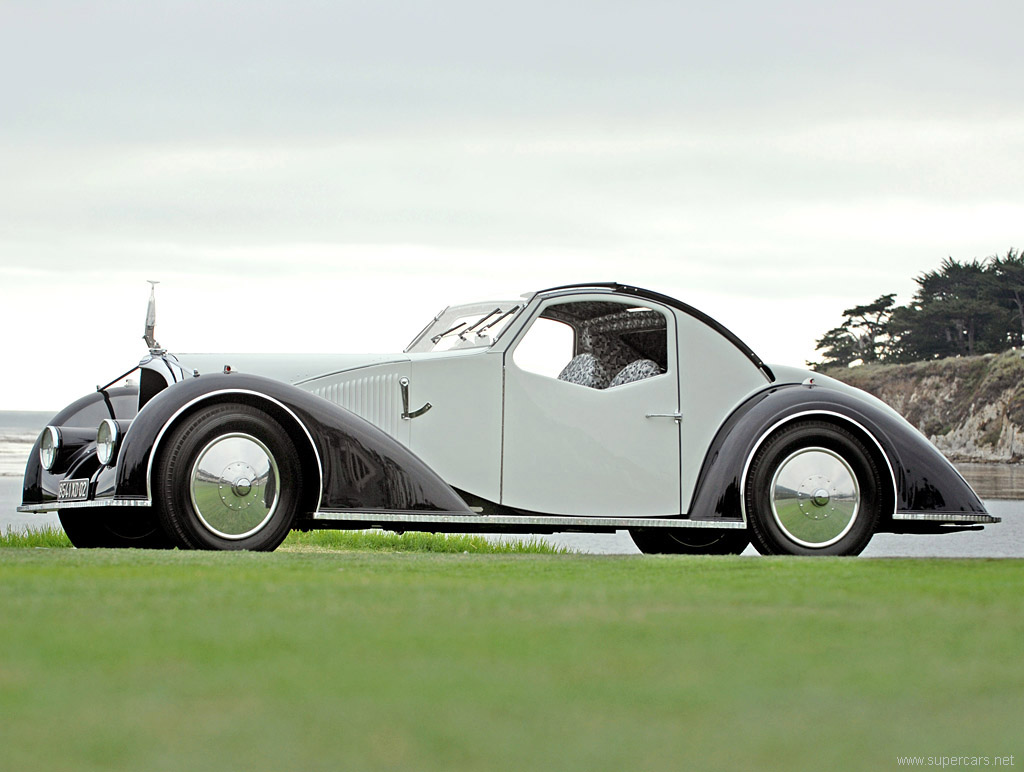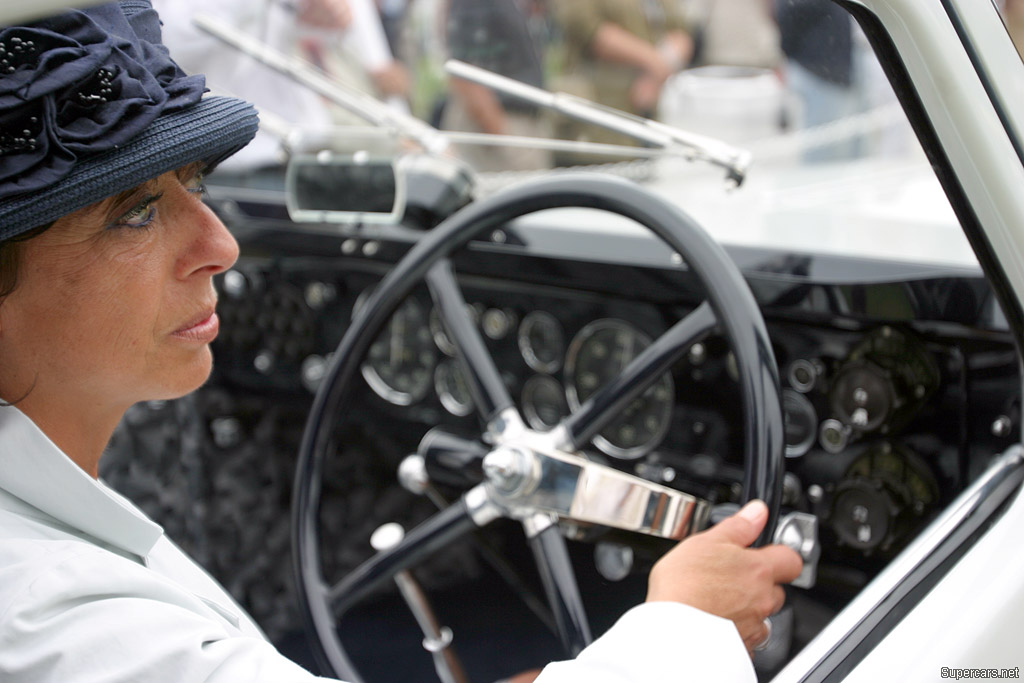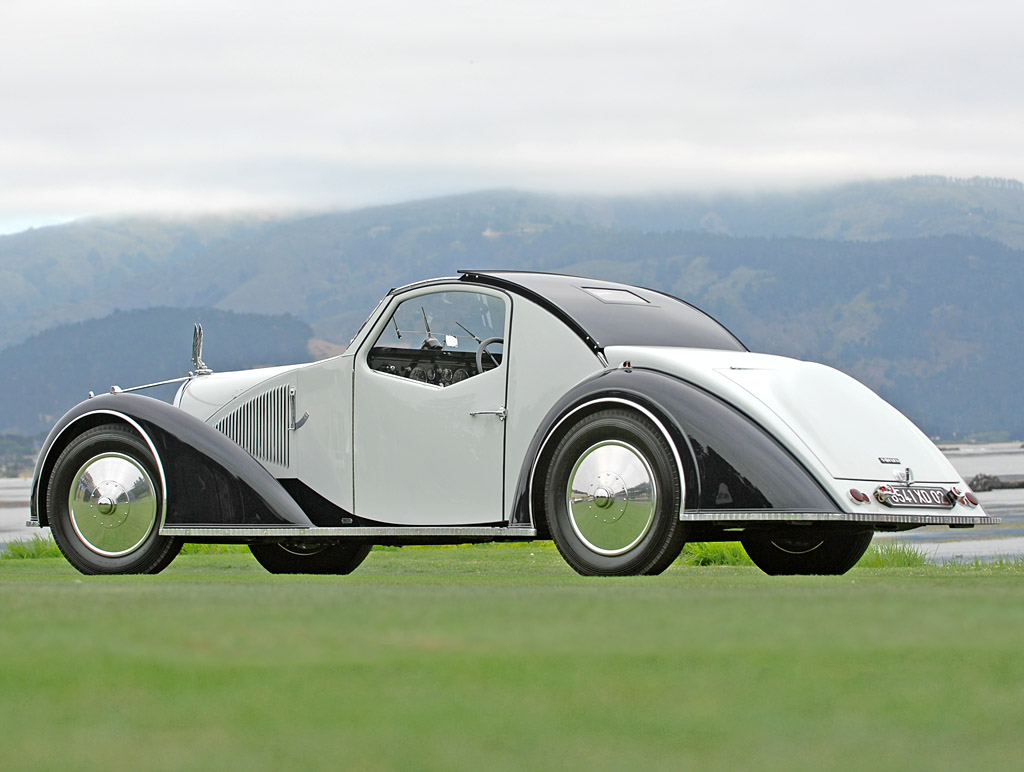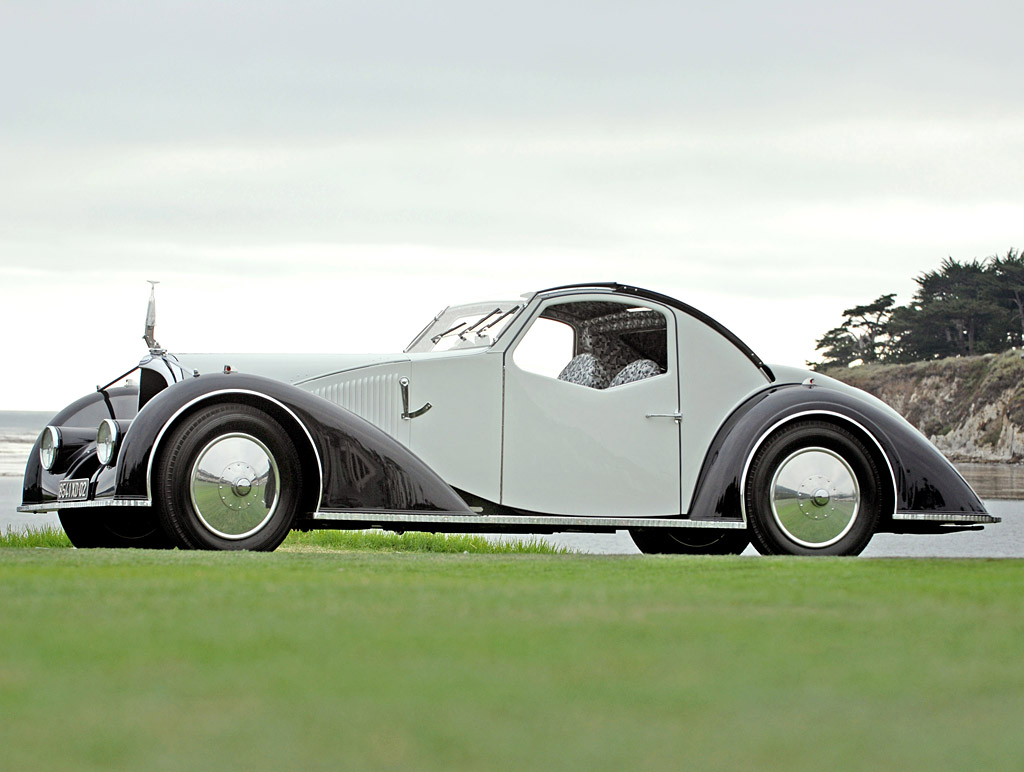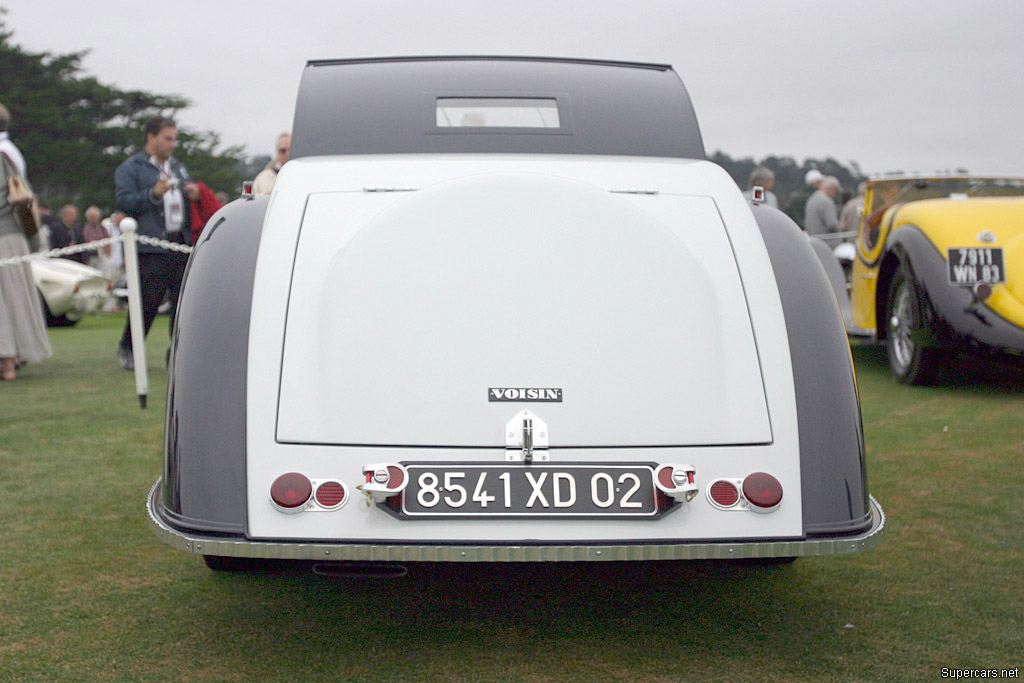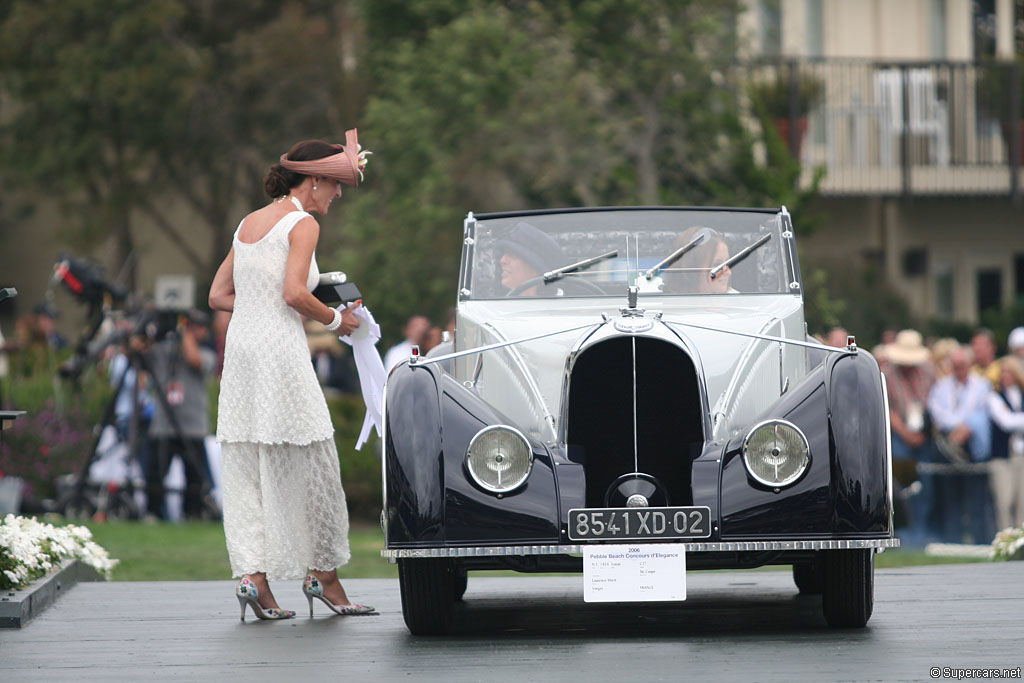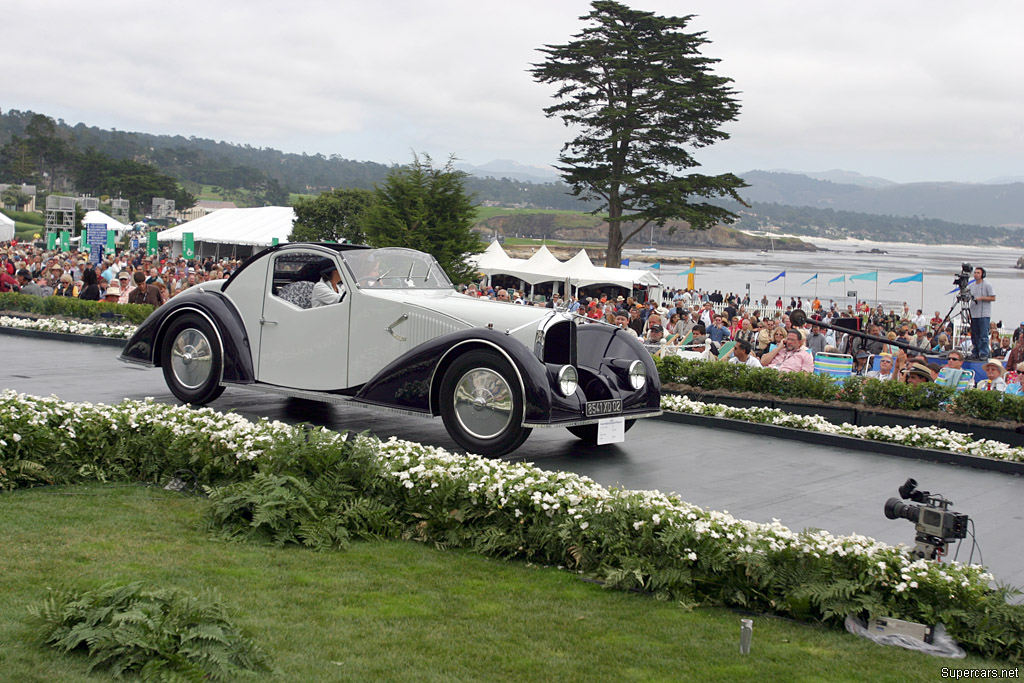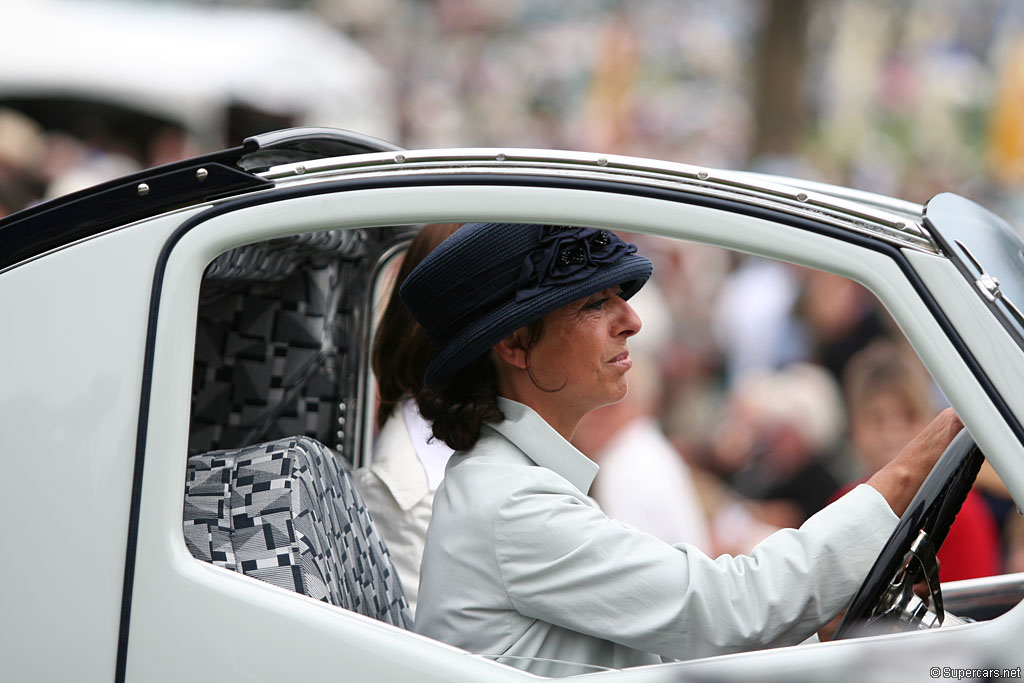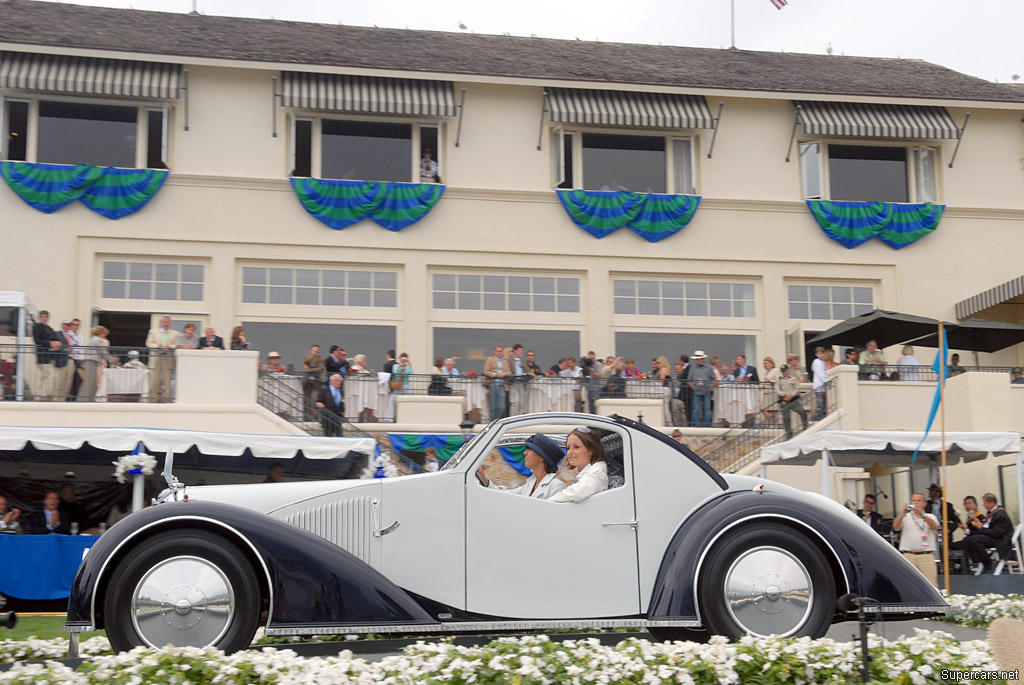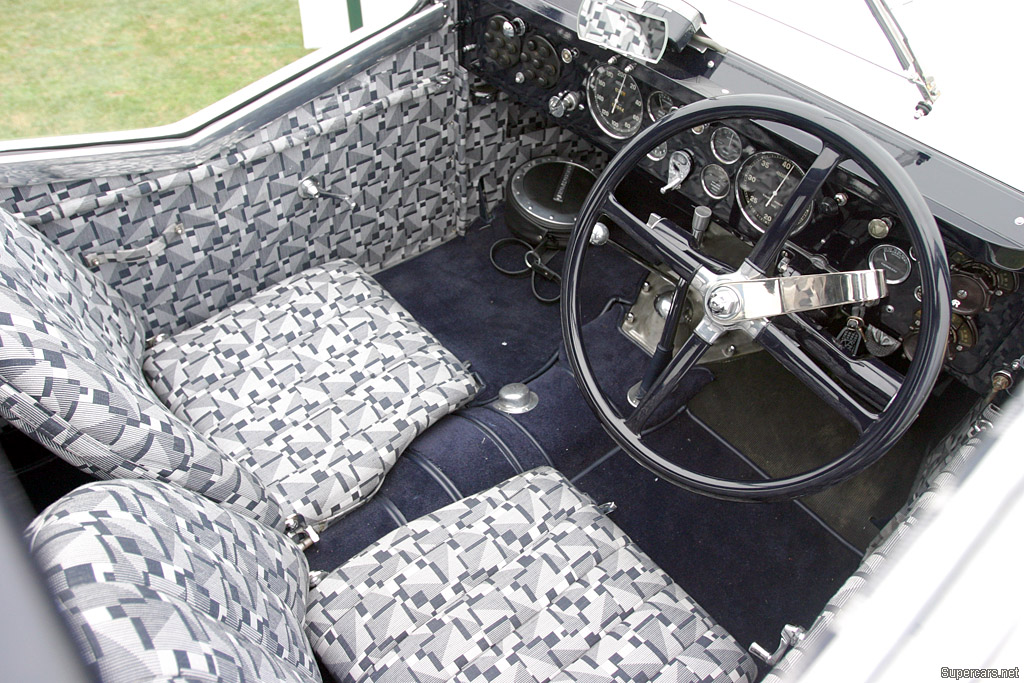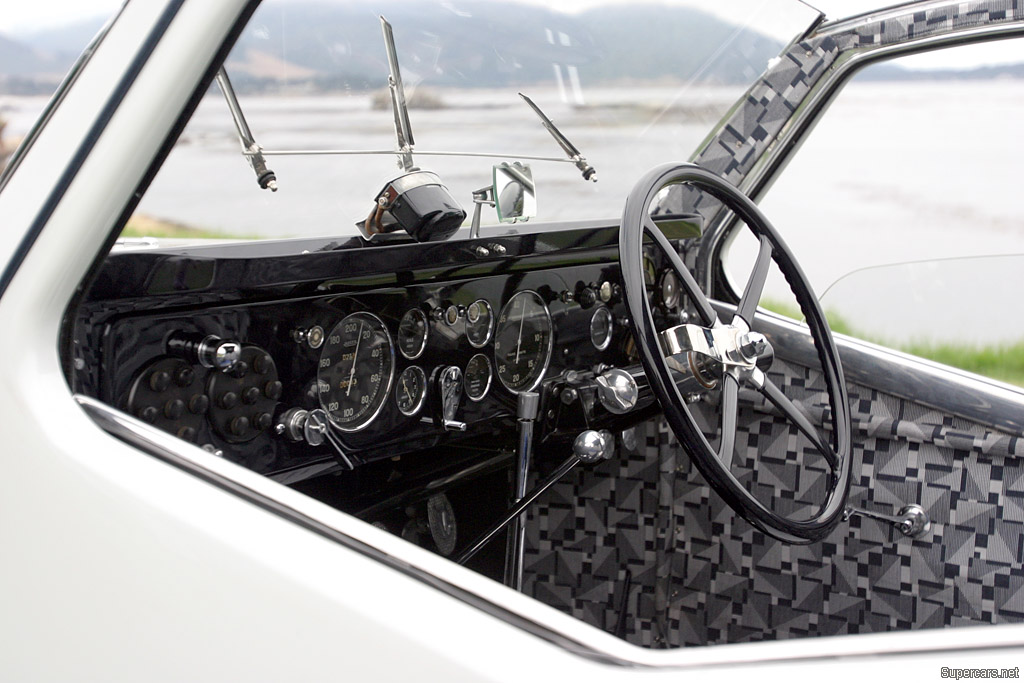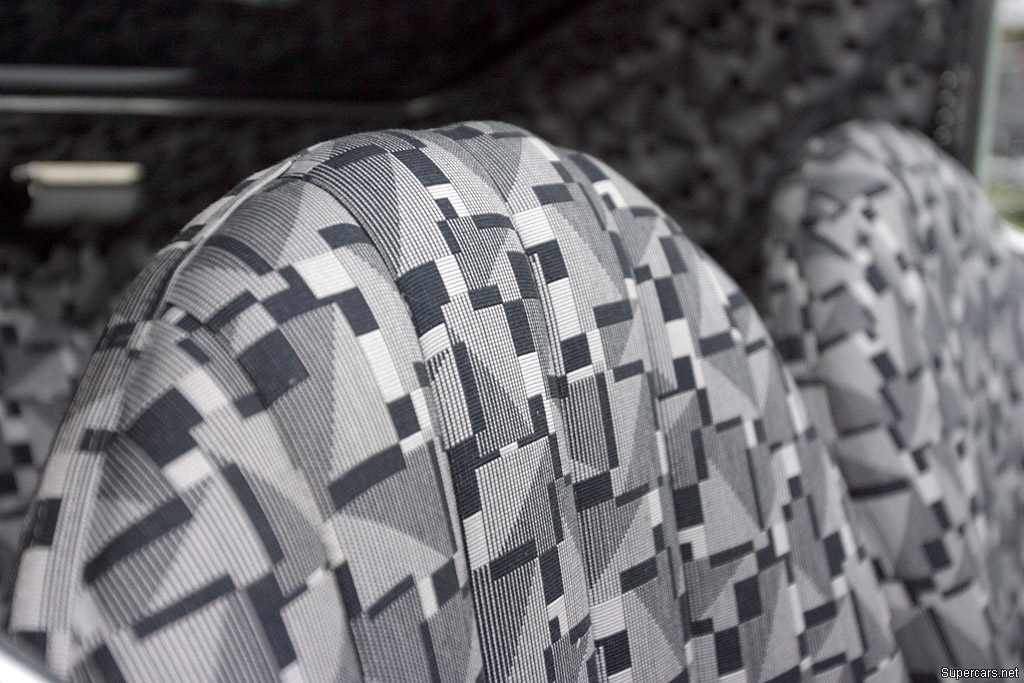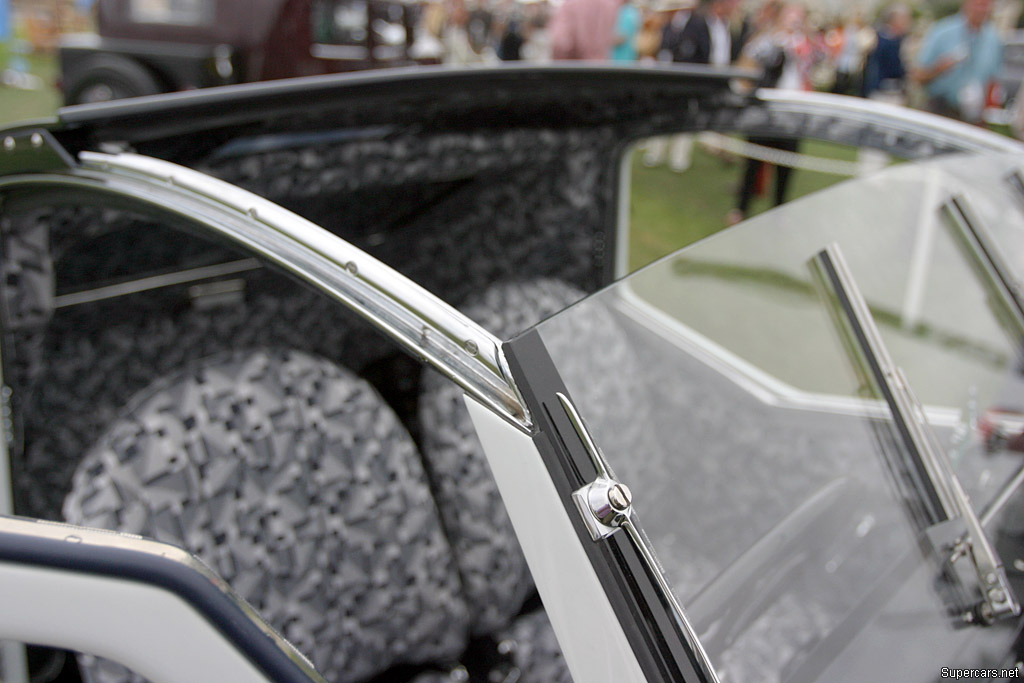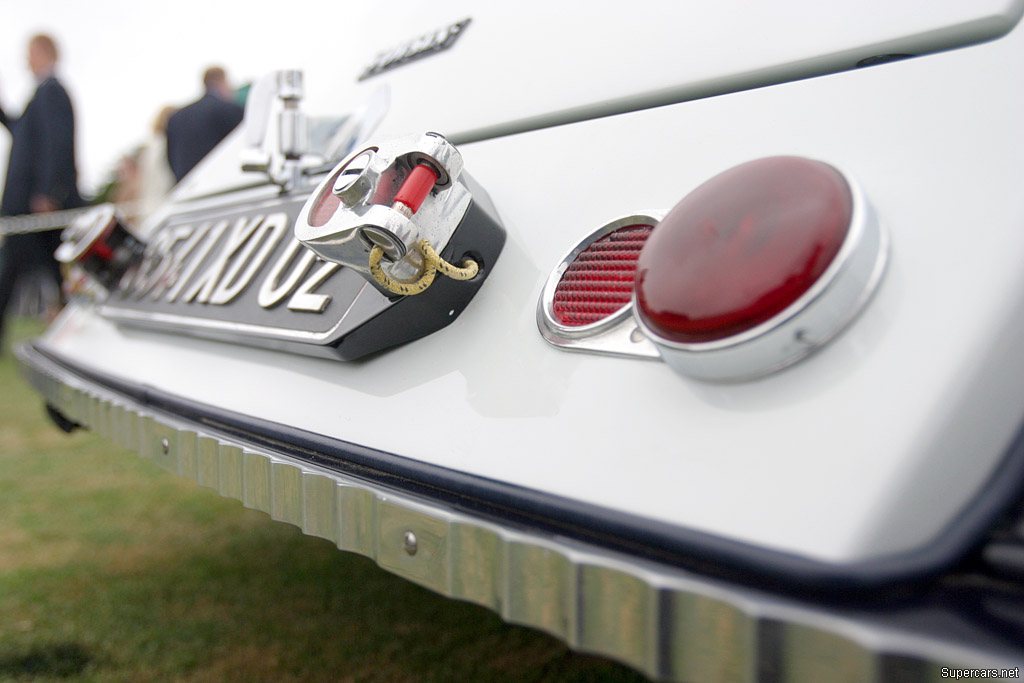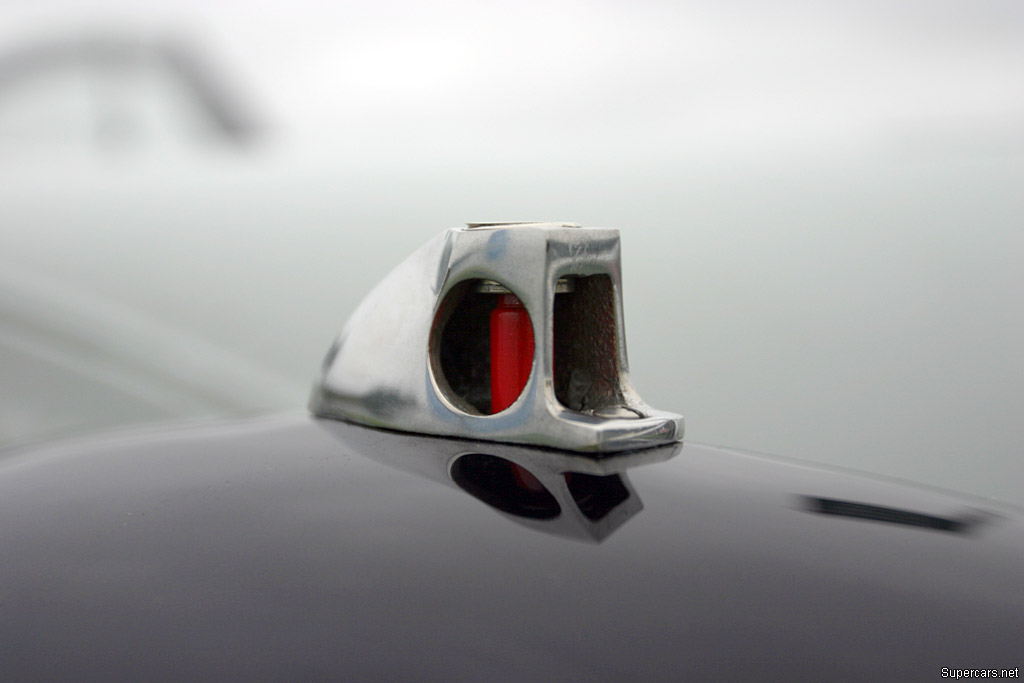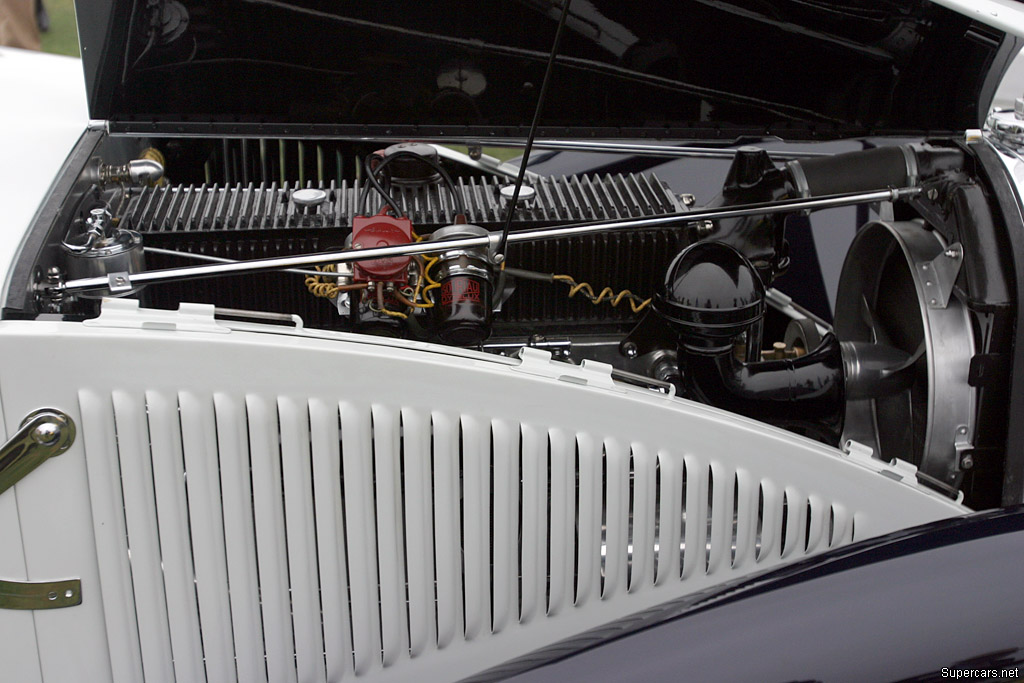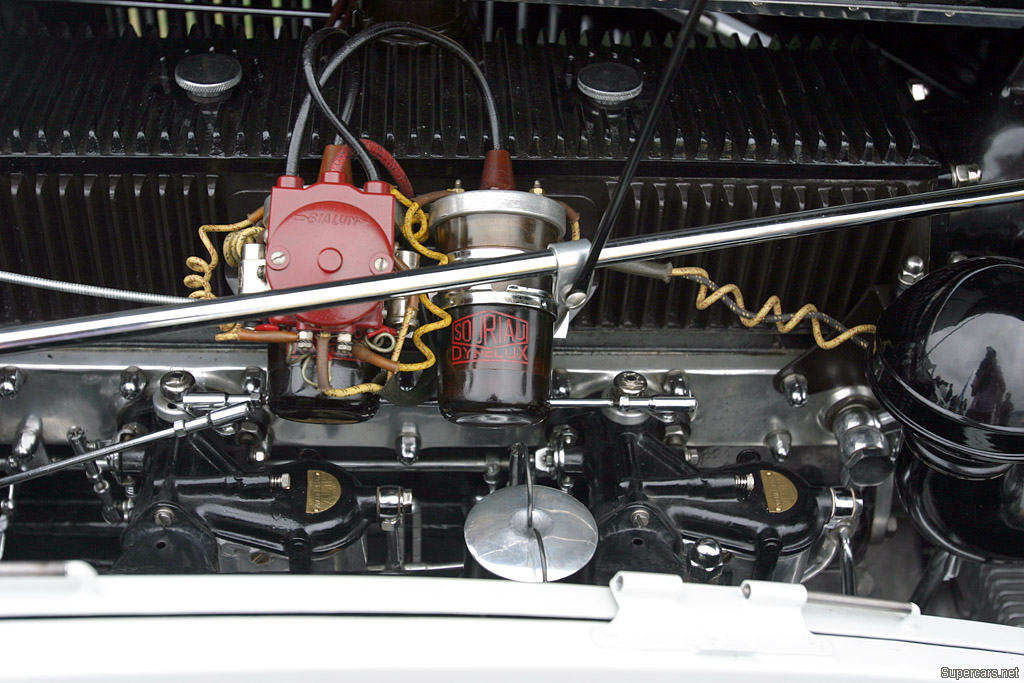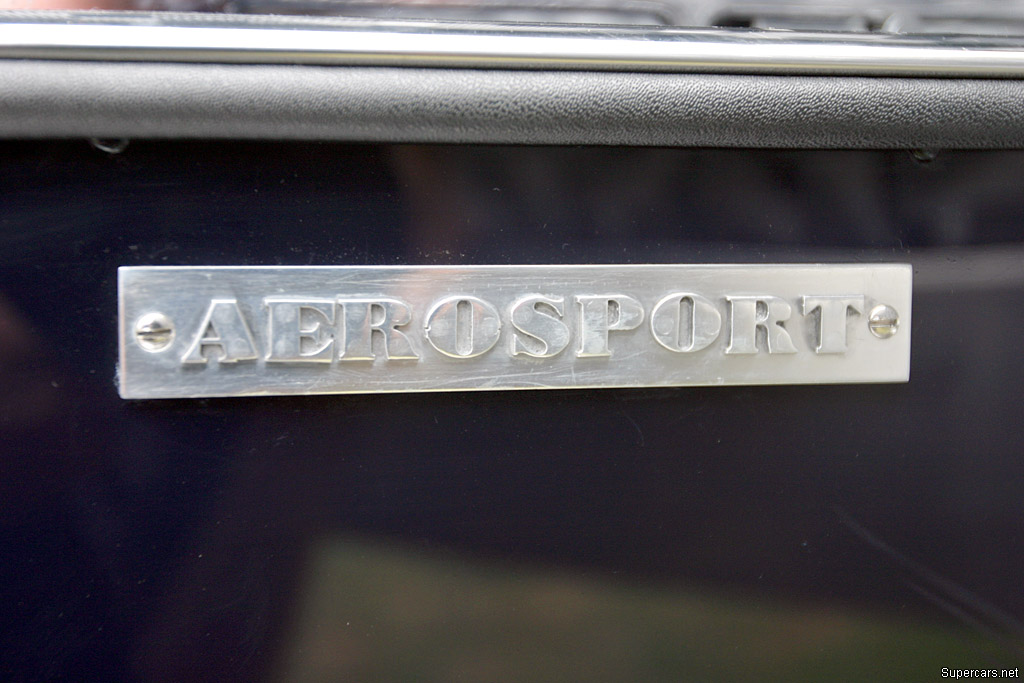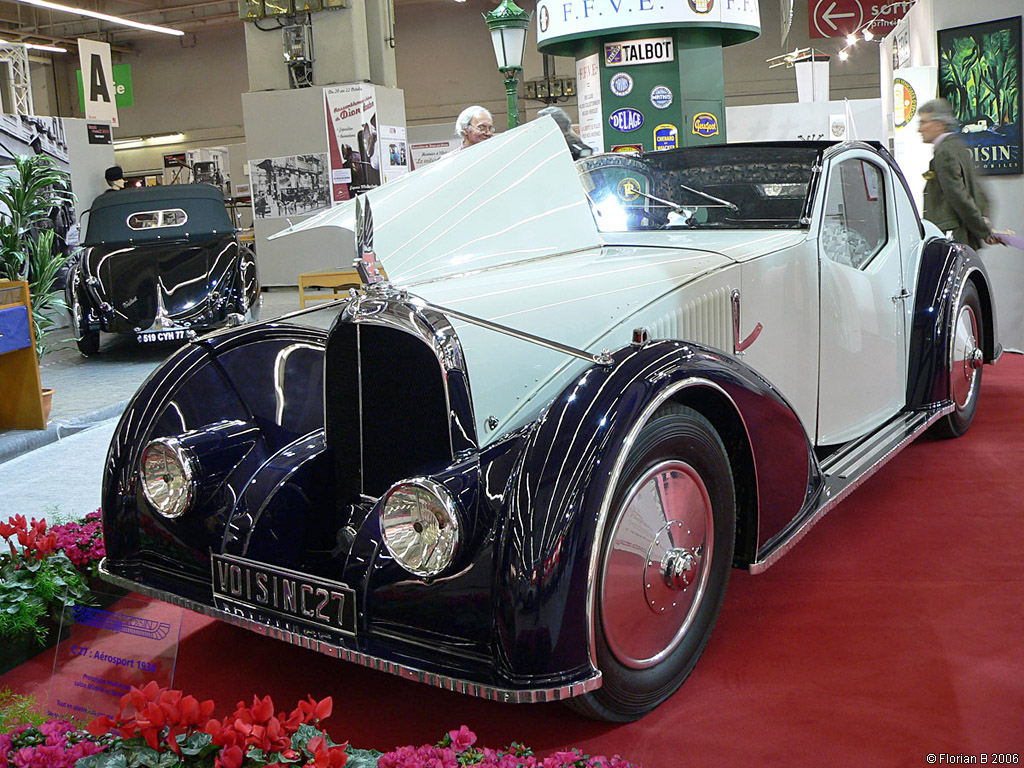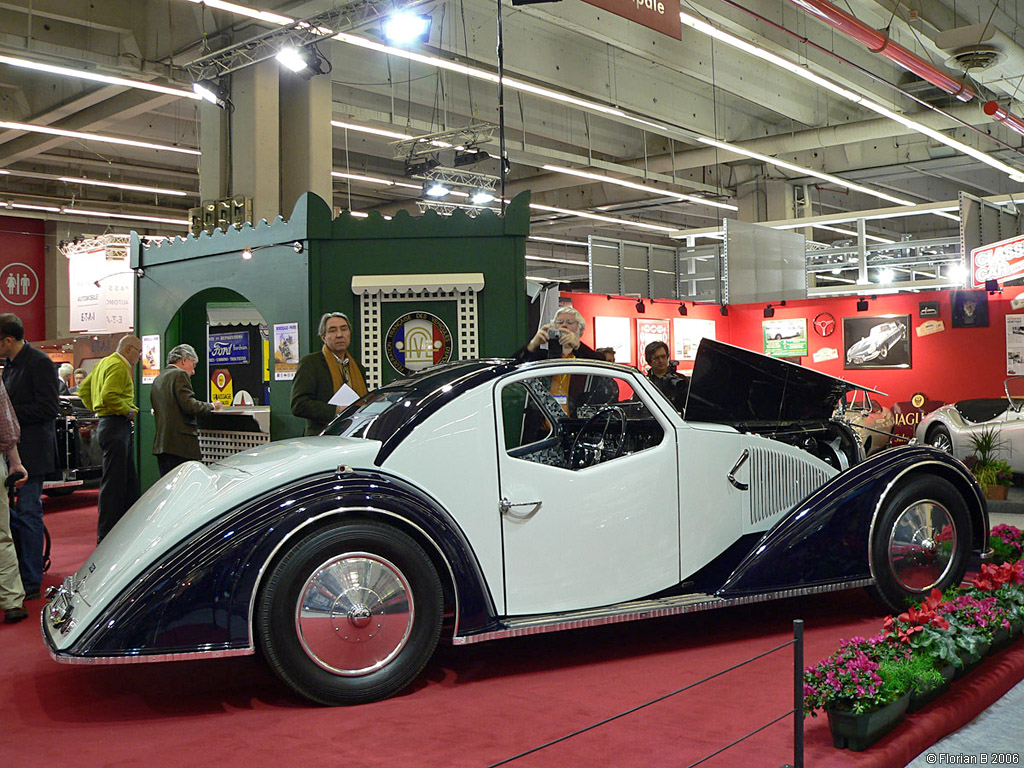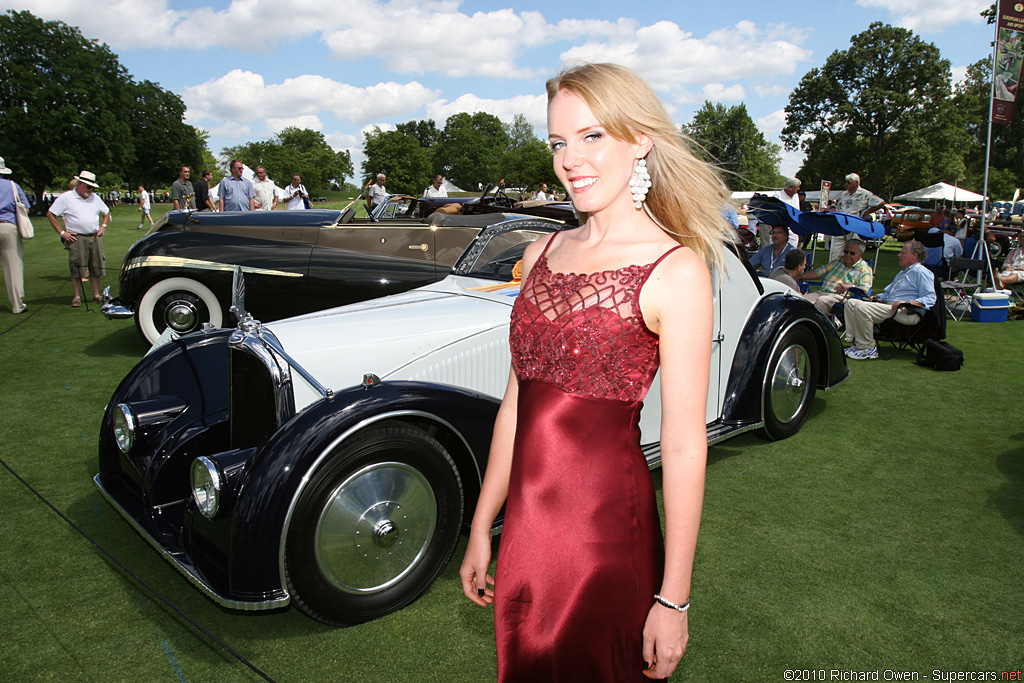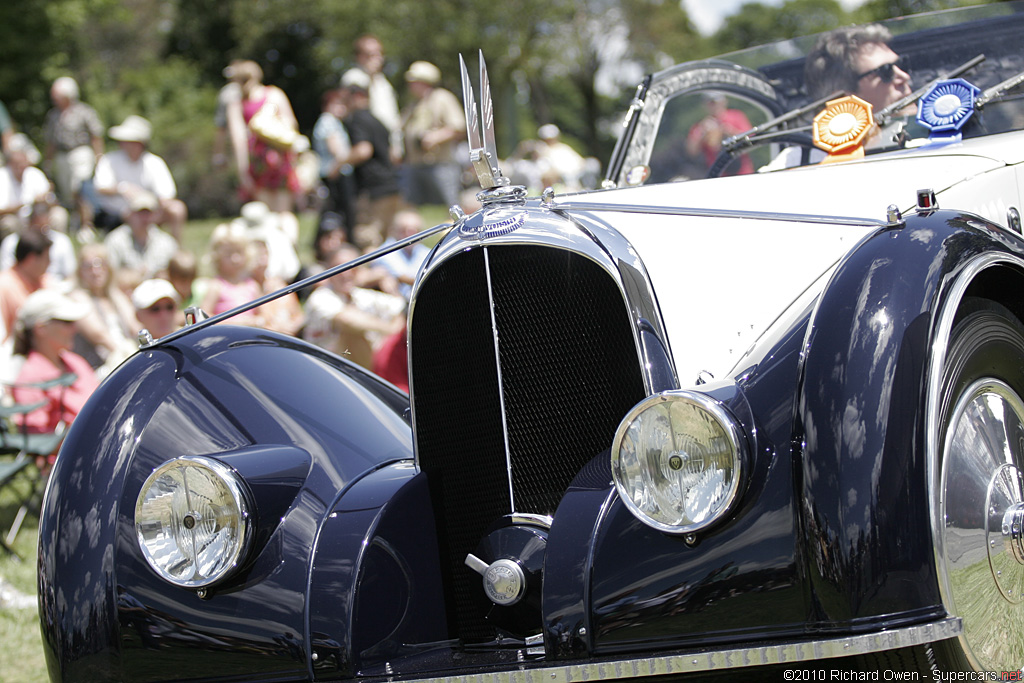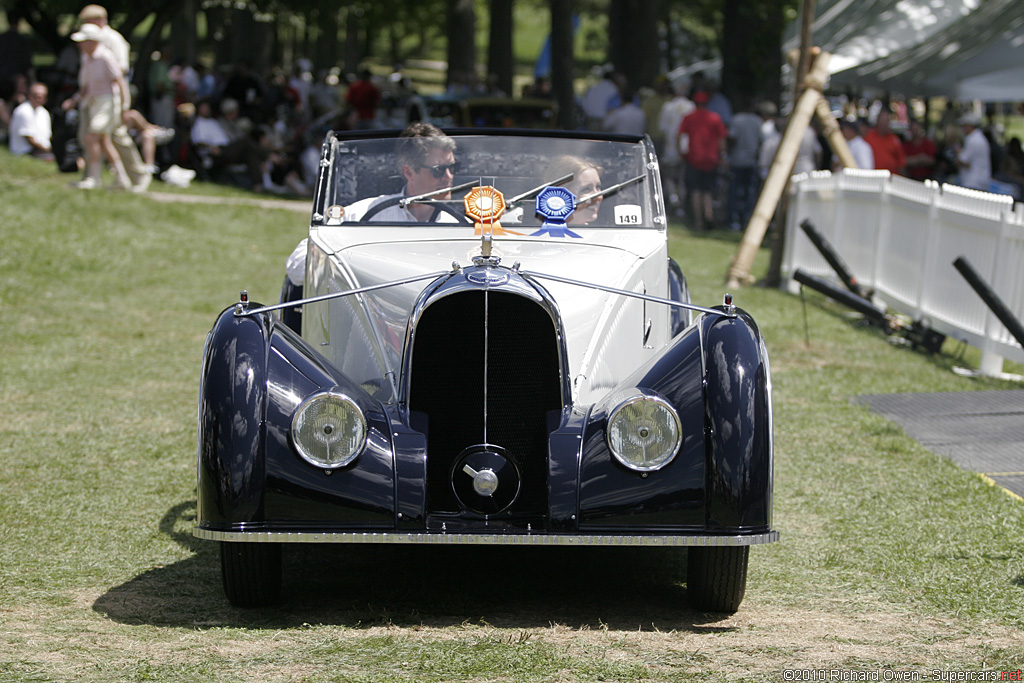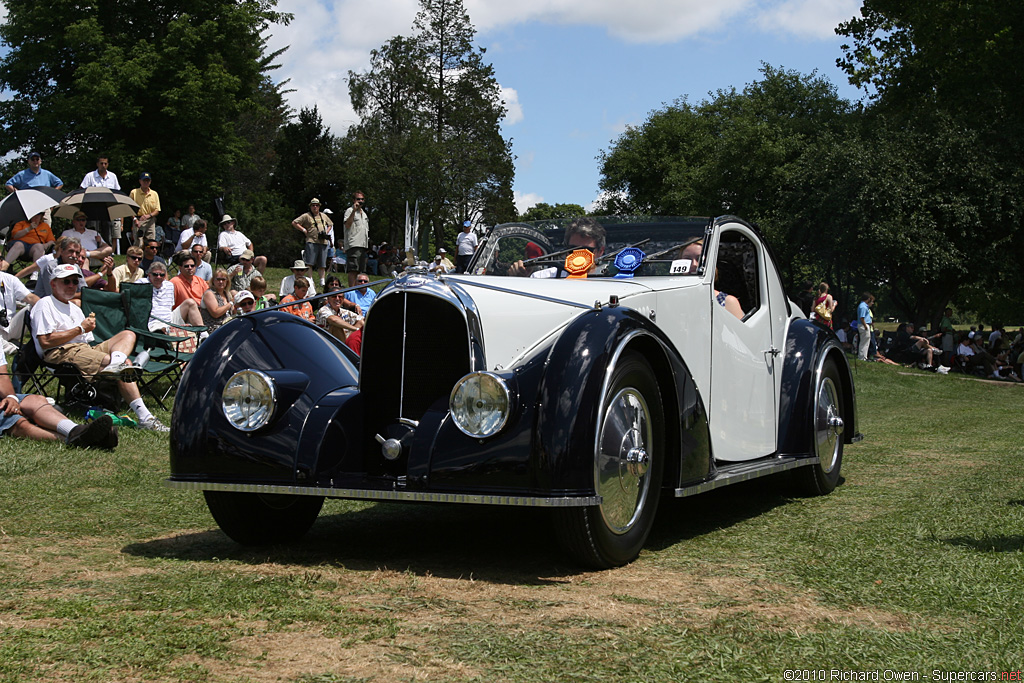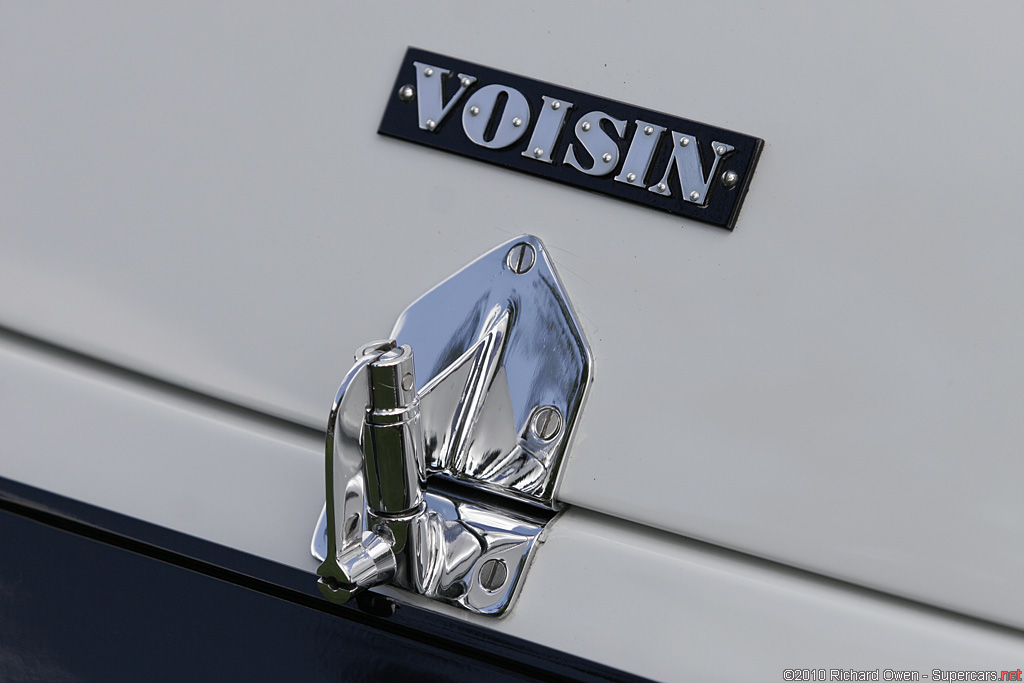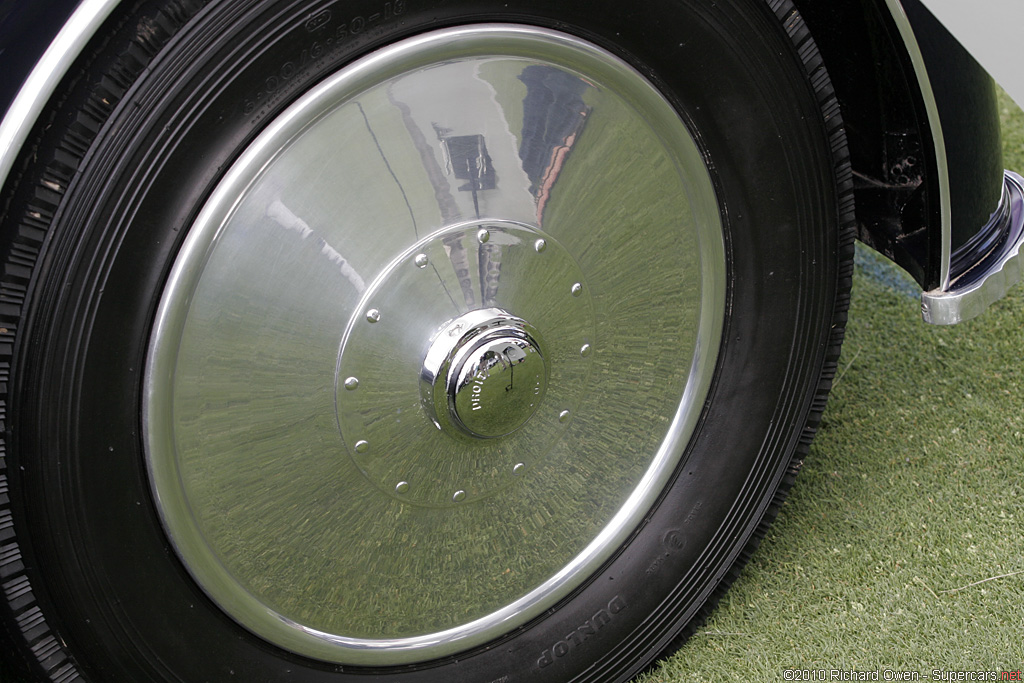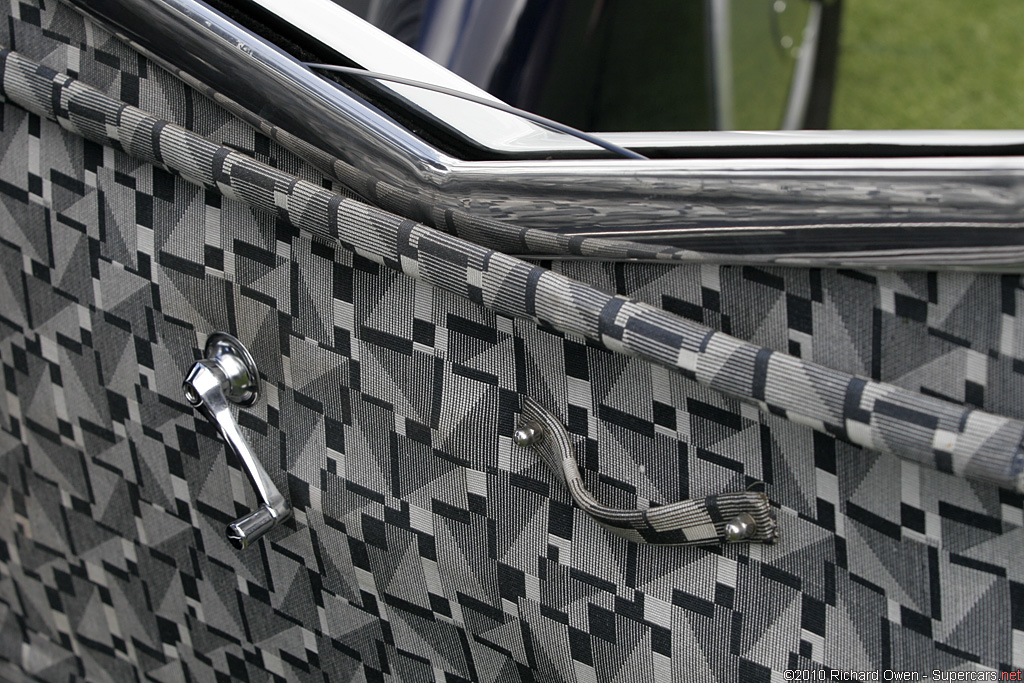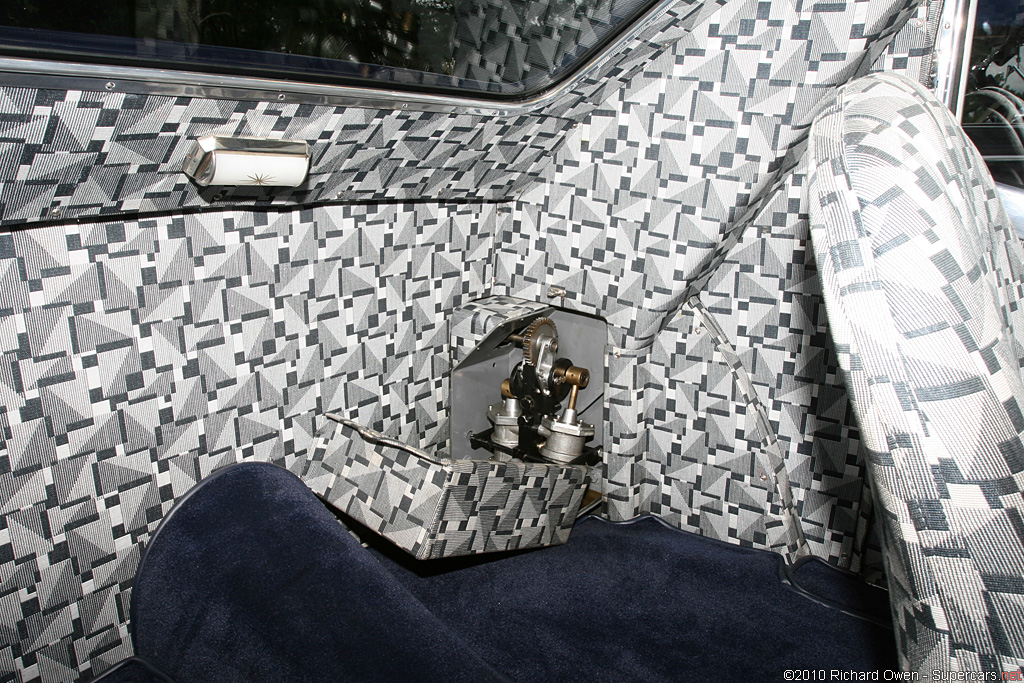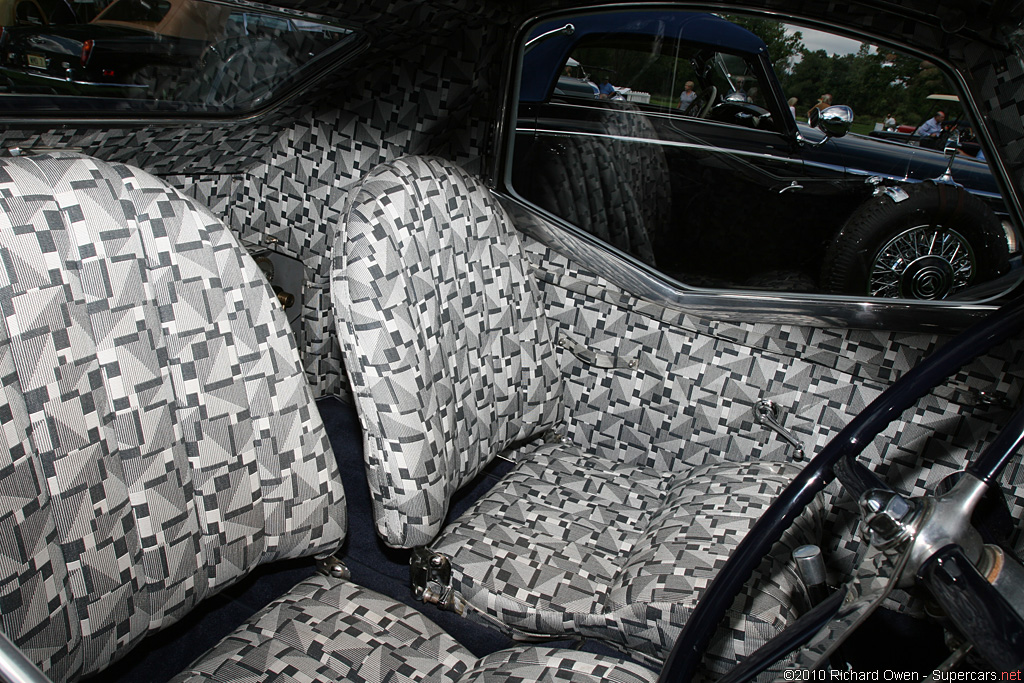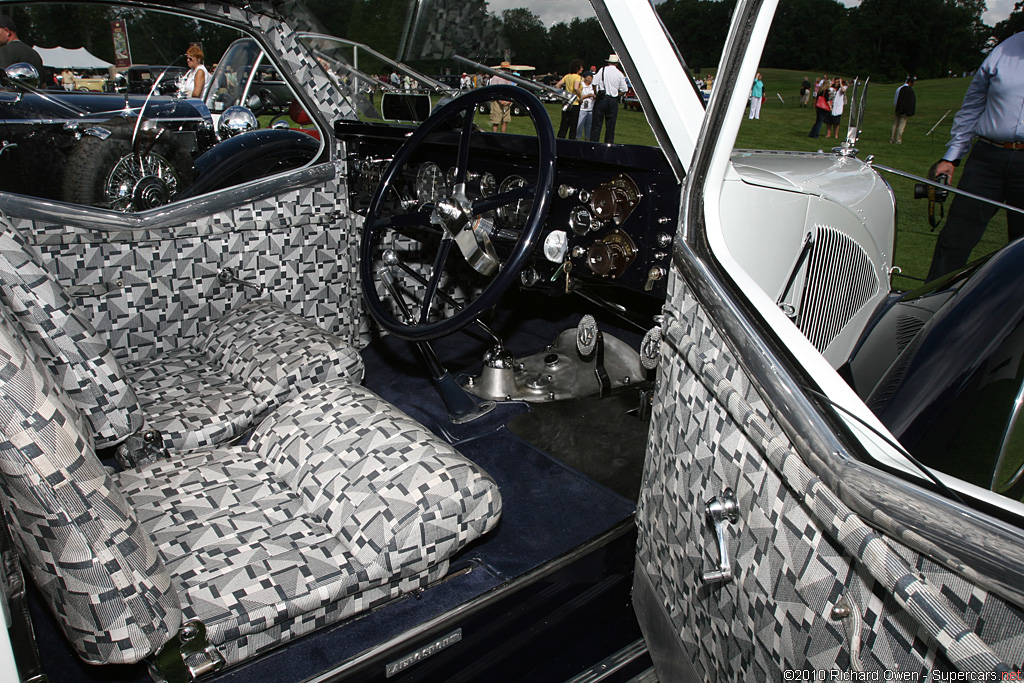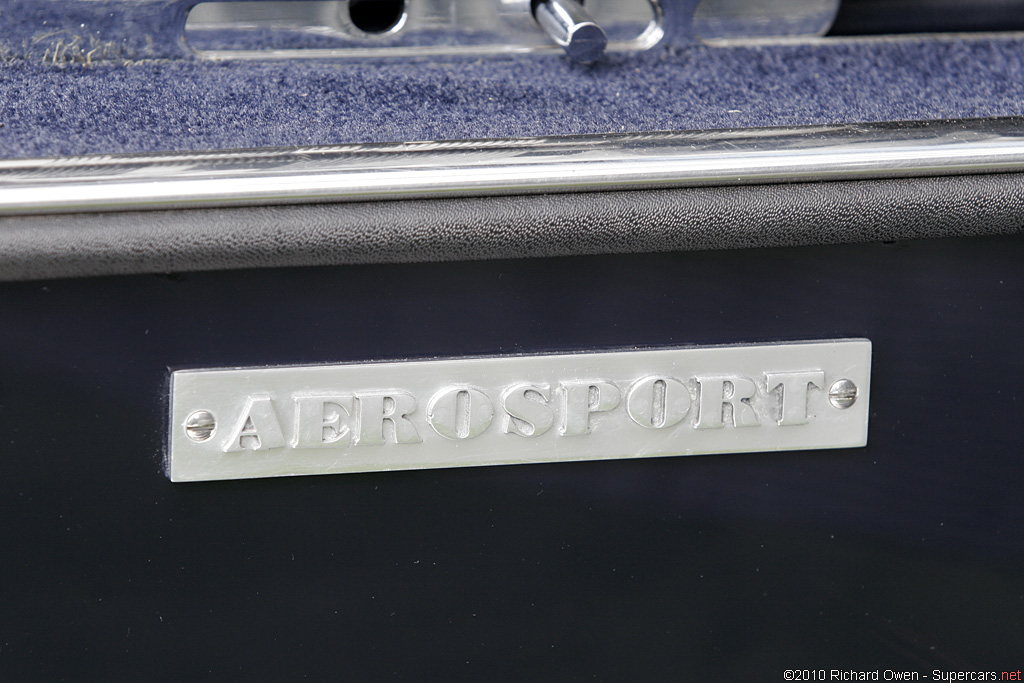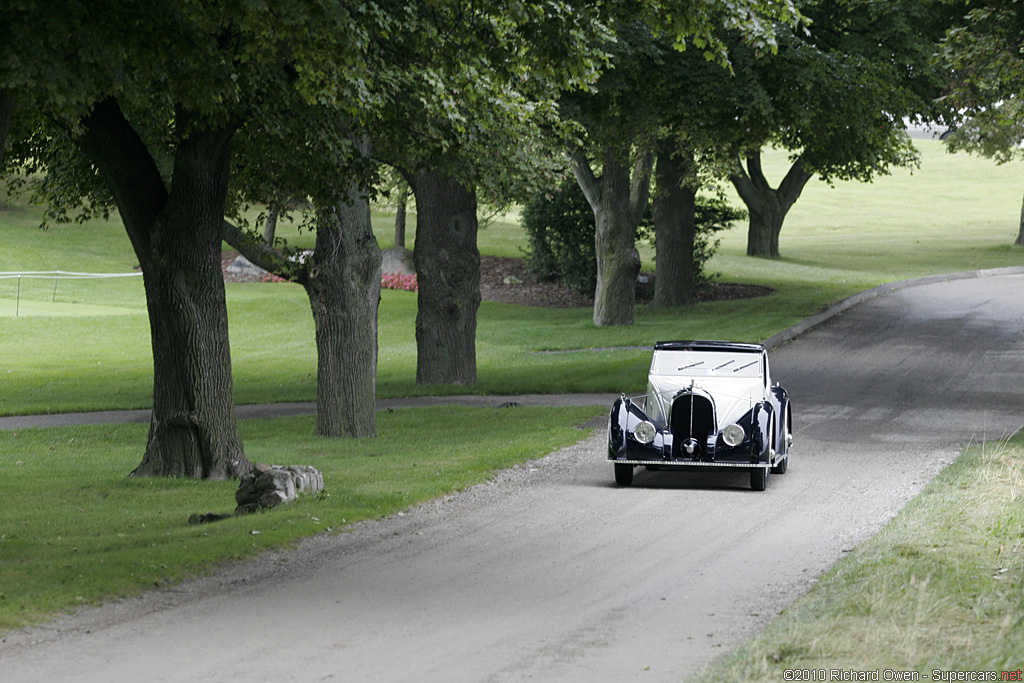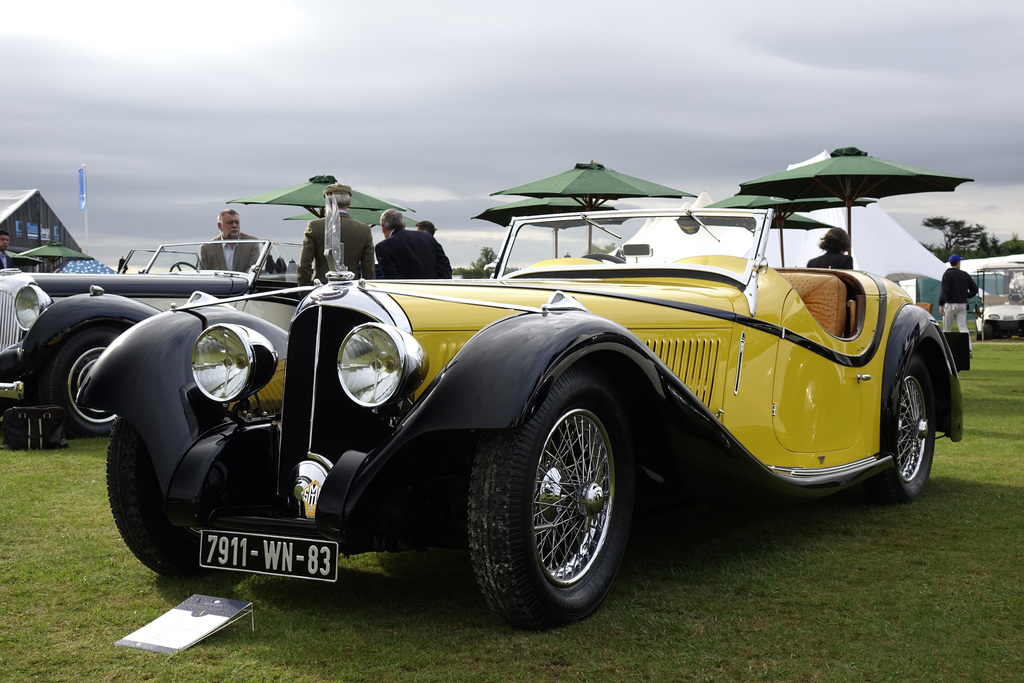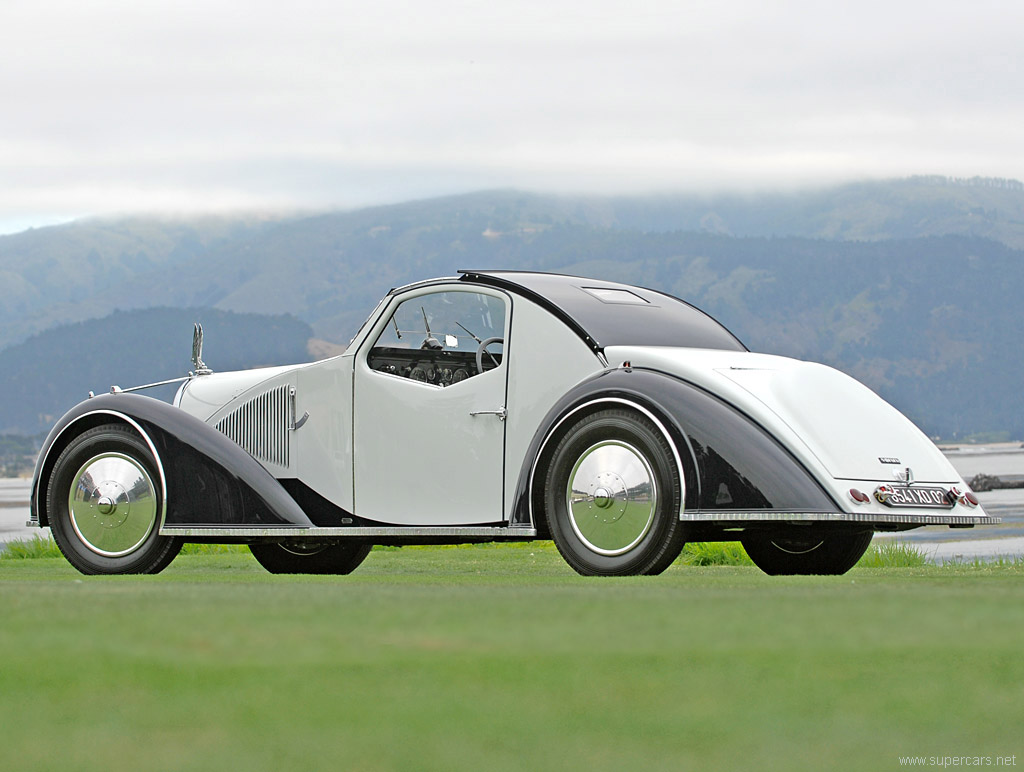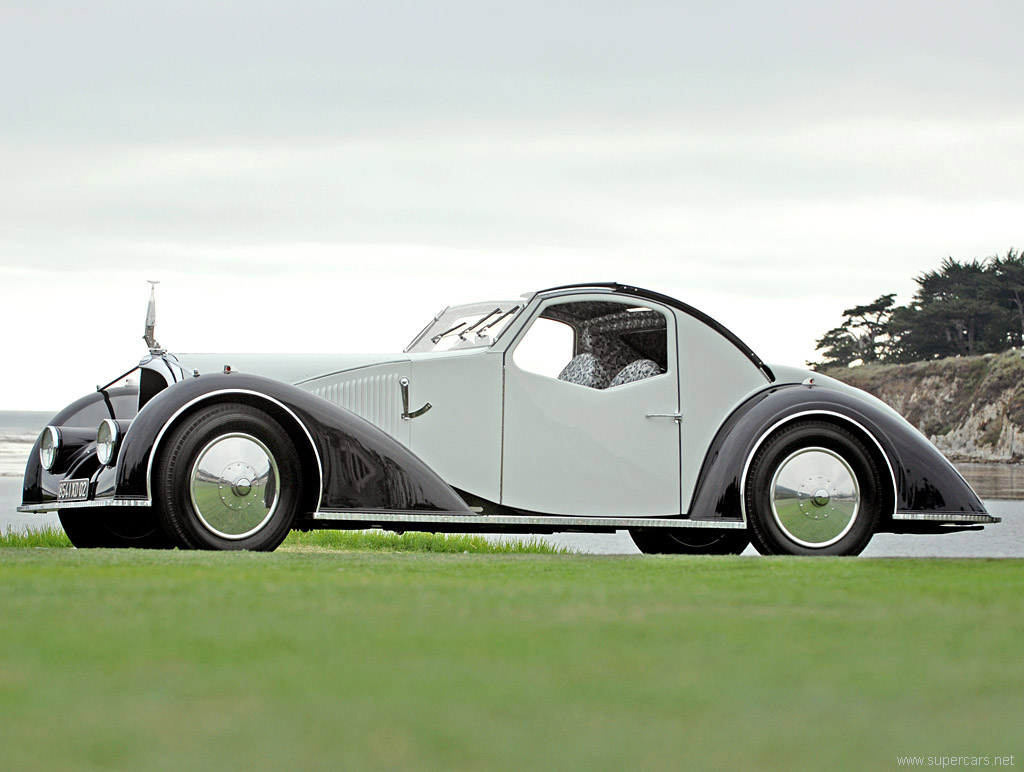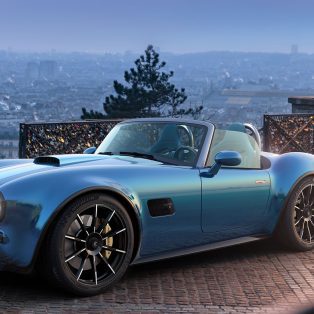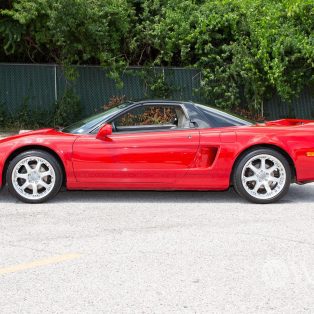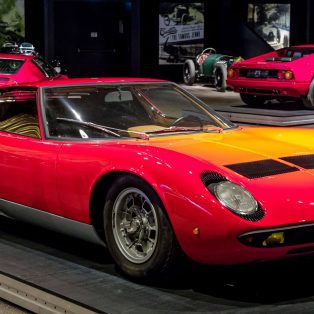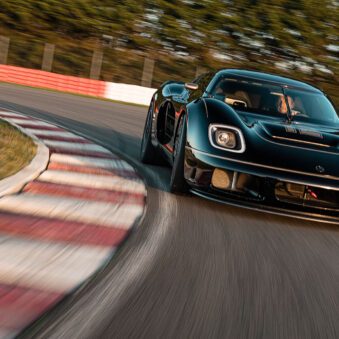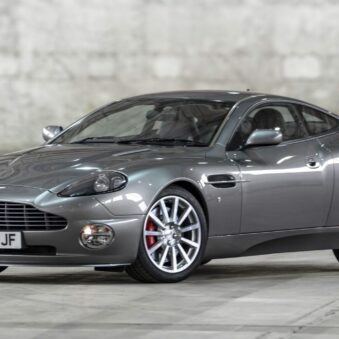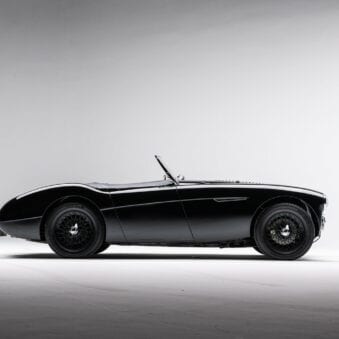1934 Voisin C27 Aérosport
While Voisin made many unique and interesting cars based on his vast aircraft knowledge, none are as breathtakingly distinct as this C27 Aérosport built on chassis 52002. With a clever mix of French curves and Voisin’s art deco touches, it is one of the most deserving cars to be labeled as rolling sculpture.
The Aérosport’s story began in summer of 1934 when Voisin built a car called the Aérodyne and displayed it that fall at the Paris Motor show. With it, he was trying to draw attention to his oddball styling and unique features such as a sliding sunroof. While the intention was to make two dozen Aérodynes, only a few examples were really completed.
After the Paris Motor Show, two roadsters were built on a shortened and underslung version of the Aérodyne chassis known as the C27. The second of these was chassis 52002, a streamlined and pontoon-fended masterpiece called the Aérosport.
Its body styling is the work of the car’s first owner, Andre Christmas who worked in collaboration with Voisin. Their balanced design is as impressive in detail as from afar. They took the basic outline of the Aérodyne, lowered it, added a sizeable trunk space, pentagon side windows, piano-hinged doors and ribbed aluminum accents along the extremity. The highlight is a sliding roof which has its own engine that works off the main engine’s vacuum. It operates with a switch on the dashboard and closes directly onto the top of the windshield.
Inside, the car features a striking geometric pattern and ample room for luggage. When the sliding roof is retracted, it offers tremendous exposure, especially compared to the conventional sunroofs of the era.
When completed, the Aérosport was displayed at the 1935 Geneva Motor show where its striking design was almost more interesting than the patented Knight sleeve valve engine under the hood. It replaced the standard poppet valves with moving sleeves that surrounded the piston to uncover intake and exhaust ports. This complex system worked without return springs, and enabled very high engine speeds with less stress than a conventional pushrod design. The resulting quieter ride offset the slight haze left by the exhaust as oil slipped between the sleeves.
After the show, the Aérosport was care taken by many fortunate individuals and it now remains largely as it did when it was first shown in 1935. It was a long time highlight of the Philip Moch collection in France before being bought by the Mullin Automotive Museum.
1934 Voisin C27 Aérosport Gallery
In Detail
| type | Series Production Car |
| engine | Sleeve-Valve Inline-6 |
| position | Front Longitudinal |
| aspiration | Natrual |
| valvetrain | Sleeve Valves |
| fuel feed | Twin Zenith Stromberg Carburetors |
| displacement | 2994 cc / 182.7 in³ |
| bore | 76 mm / 2.99 in |
| stroke | 110 mm / 4.33 in |
| power | 78.3 kw / 105 bhp @ 3800 rpm |
| specific output | 35.07 bhp per litre |
| bhp/weight | 80.77 bhp per tonne |
| body / frame | Aluminum Body over Steel Chassis |
| driven wheels | RWD |
| front brakes | Drums |
| rear brakes | Drums |
| steering | Worm & Nut |
| f suspension | Leaf Springs |
| r suspension | Leaf Springs |
| curb weight | 1300 kg / 2866 lbs |
| transmission | 4-Speed (2 Speed Manual + Overdrive) |
| top speed | ~150 kph / 93.2 mph |
| designers | André Christmas, Ski Gabriel Voisin |
Sources and Further Reading
1.Courteault, Pascal et. al. Automobiles Voisin: 1919-1958, Pei Intl: August 1995.
2.Borgeson, Griffith . ‘Gabriel Voisin, Archetype of Constructors’ Automobile Quarterly V13 N4 : 1975.





